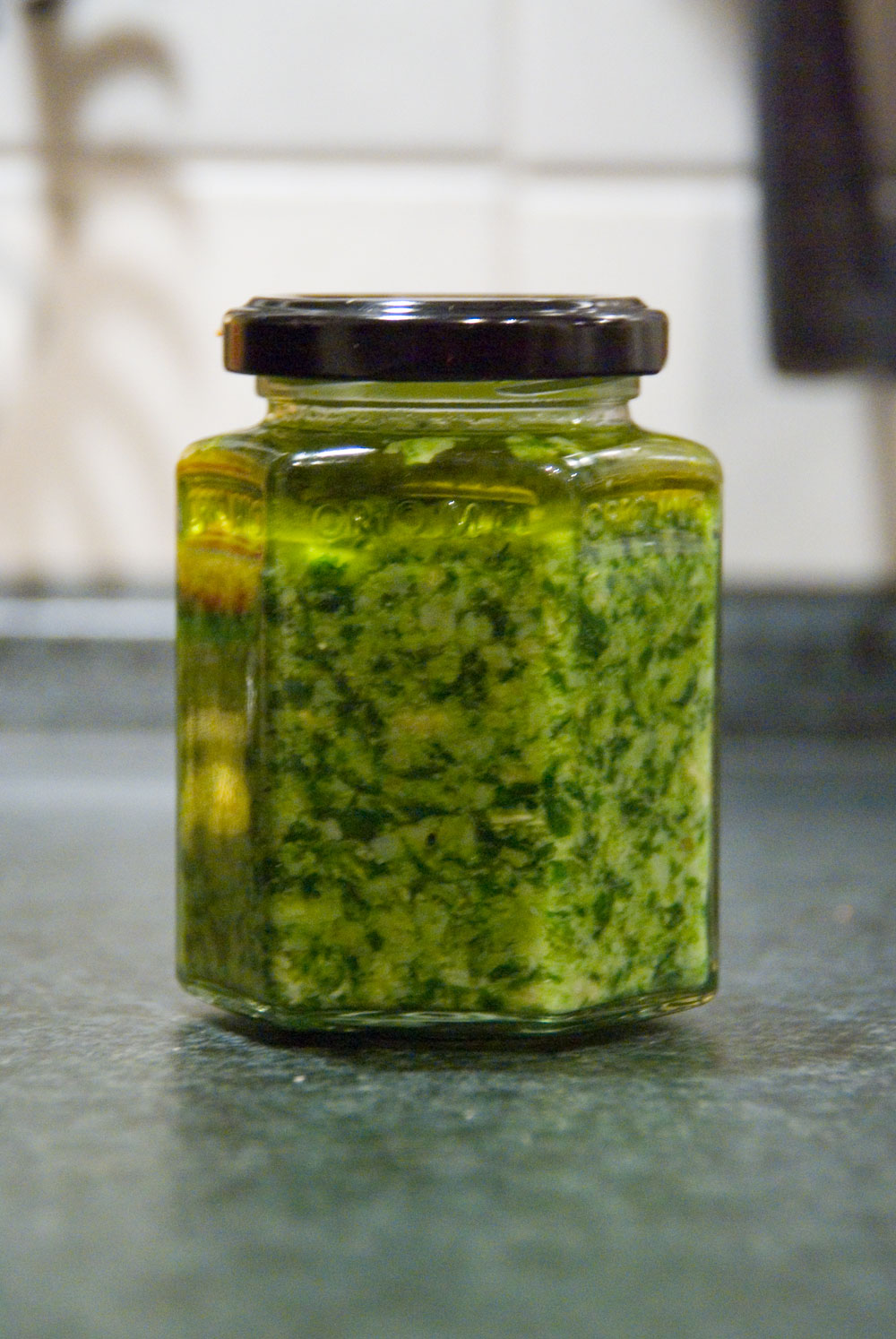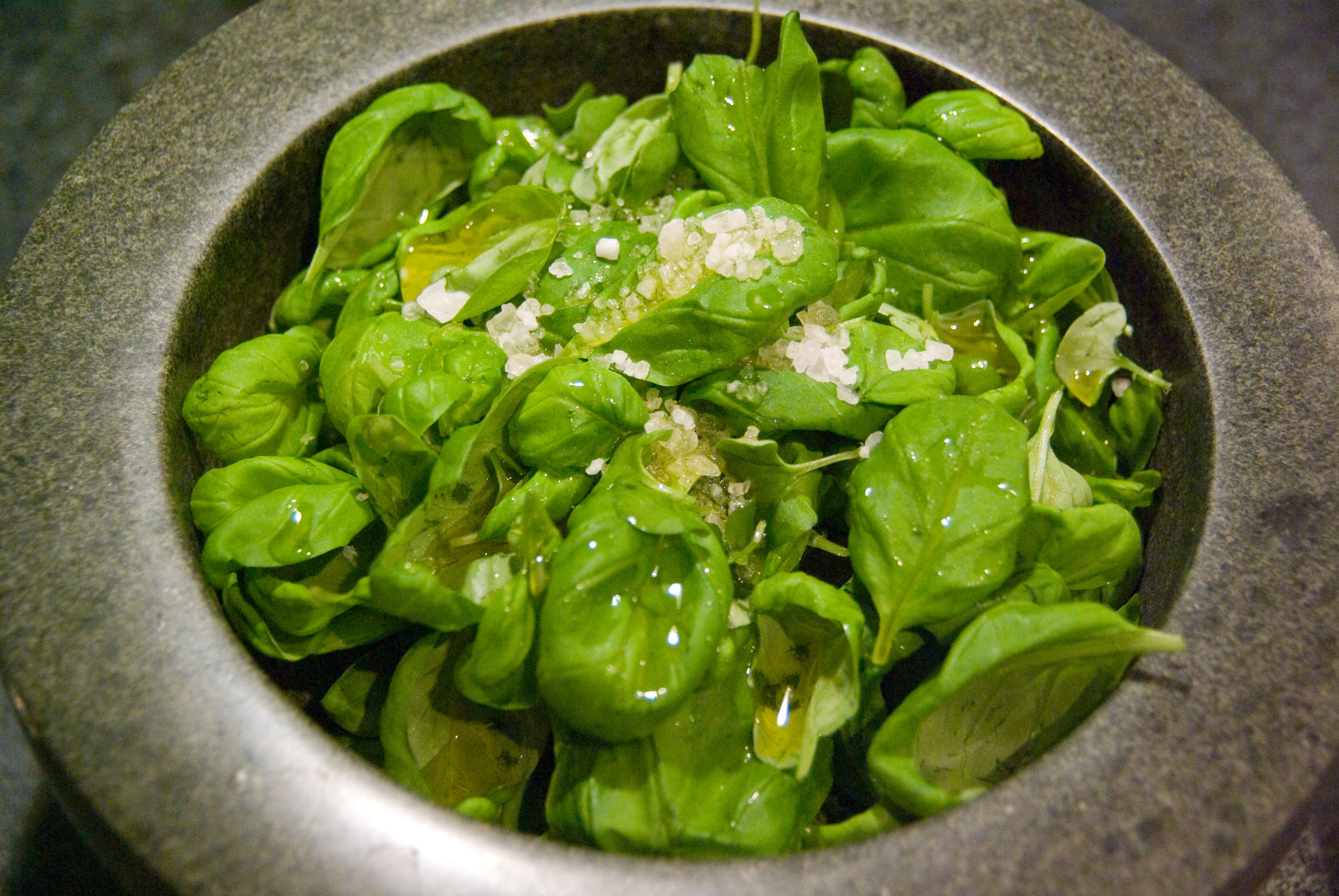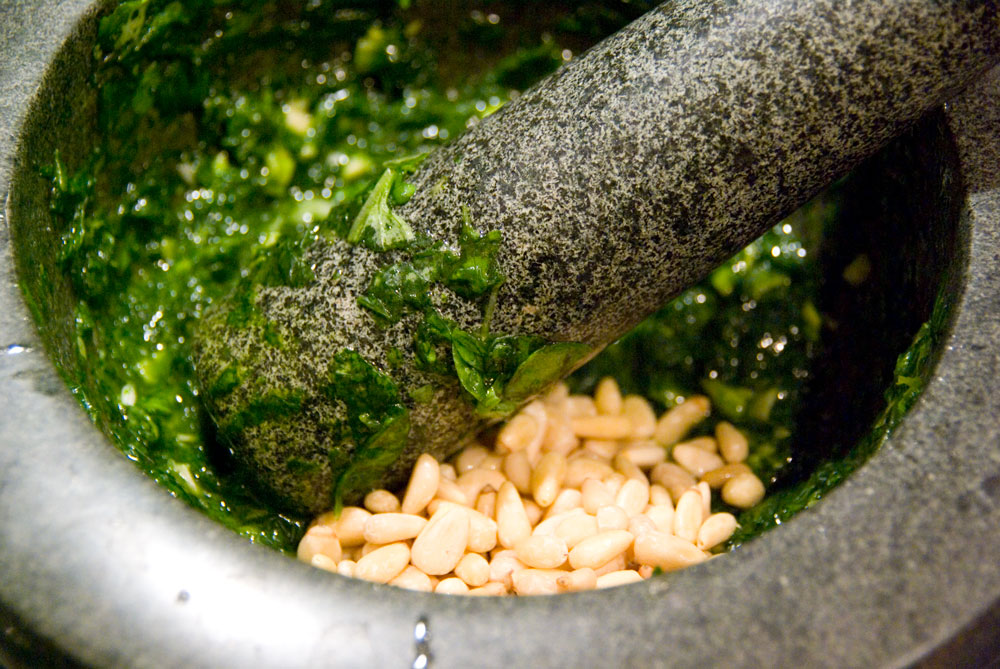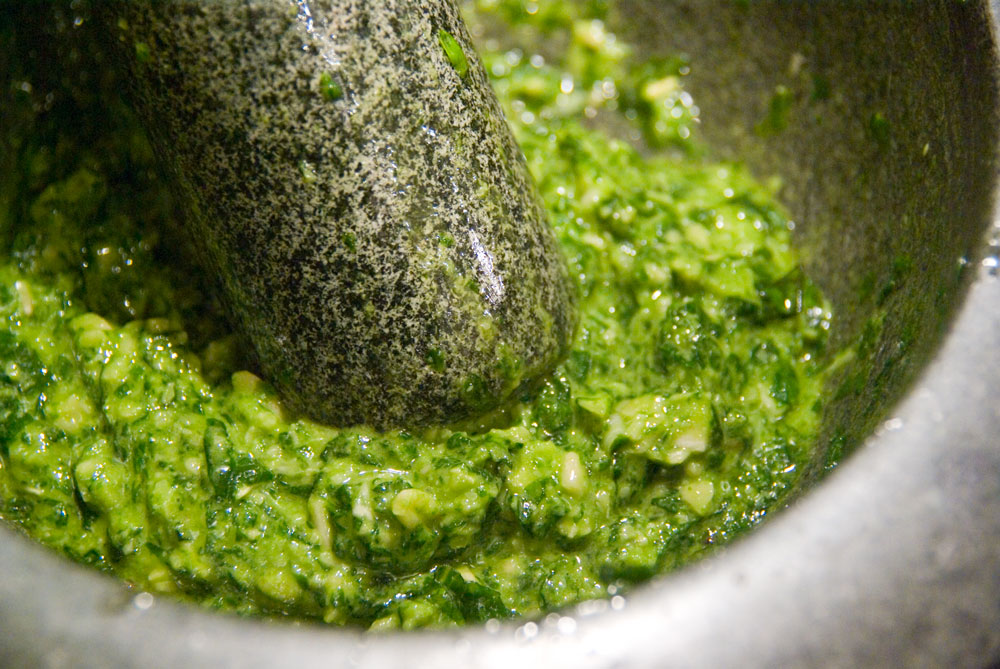Problem is, once you have tasted the homemade stuff, you're never going back to the jars and plastic bags from the supermarket. On the other hand it's very simple to make at home. You can also use a blender or food processor instead of pestle and mortar, but personally I like to see some bits and pieces.
Parmesan cheese is practically lactose free - like the most hard cheeses. Check the carbohydrates section on the nutrition facts: If a cheese (or any other dairy product without added sugar) has less than 0,5 grams of sugars/carbohydrates per 100 grams, then you can consider it lactose free (for me, even up to 1,5 grams is OK). If you are hyper-lactose-intolerant, better leave the cheese out or substitute it with toasted bread crumbs. Then it's even vegan!

PESTO ALLA GENOVESE
2 plants of basil
1/4 - 1/2 cup olive oil
1 teaspoon coarse salt
3 cloves garlic cloves
3 tablespoons pine nuts
1/2 cup grated Parmesan cheese/toasted bread crumbs
1 tablespoon vegetable oil
a nice jar with tight fitting lid
First, buy 2 plants of basil. Make sure the leaves look all fresh and green and that the stems are standing more or less upright. DO NOT WASH the basil. It takes away a good bit of flavor and - more importantly - you'll end up having too much water in your paste, which reduces shelf life drastically. Don't worry, most plants nowadays have grown up in greenhouses and were never in contact with exhaust gases and such.
Time to be brutal. Cut off all the stems right above the earth, then separate the leaves from the stems. Place the leaves in your grinding vessel. I use pestle and mortar made of granite. It weighs over 6 kg.

Add 1/4 cup olive oil and 1 teaspoon salt, then start pounding/mixing/pulsing (depending on the tool you use) until all the leaves are squished but still some big parts left.. It's important to add the oil and the salt to the leaves in the beginning, as the oil prevents oxidation (i.e. the leaves turning into a ghastly brown goo) and the salt helps as a grinding agent.

Now put in the garlic cloves and the pine nuts and pound/mix/pulse them with the basil oil until you have the consistency you like. As I said, I like it when there are still some bits left. Put in the Parmesan cheese and now just stir it in. Unless of course, you want to have a homogeneous paste, go on pulsing it down... Add some more olive oil if you like or if the pesto seems crumbly.

Fill the pesto into a nice little jar and try to get as few air bubbles as possible. Flatten the surface by hammering the jar (lightly) on the counter, then top it off with some vegetable oil. Why not olive oil? The oil serves as air barrier to prevent oxidation (that is your nice green pesto turning brown). Olive oil crystallizes in the refrigerator, so chances are that your oxidation barrier will break.
0 comments:
Post a Comment